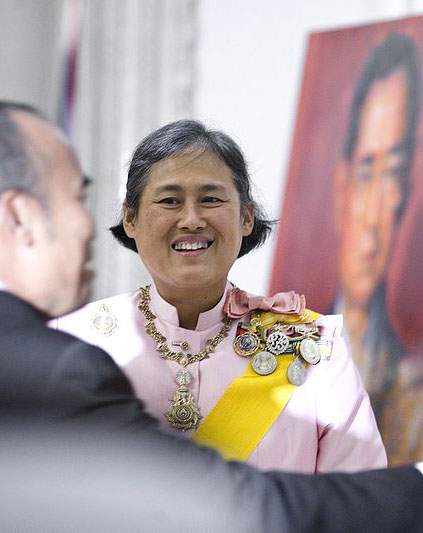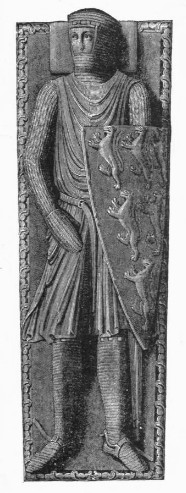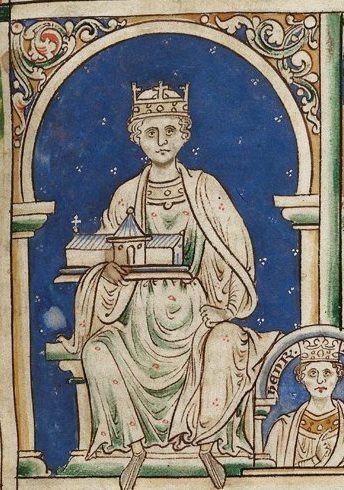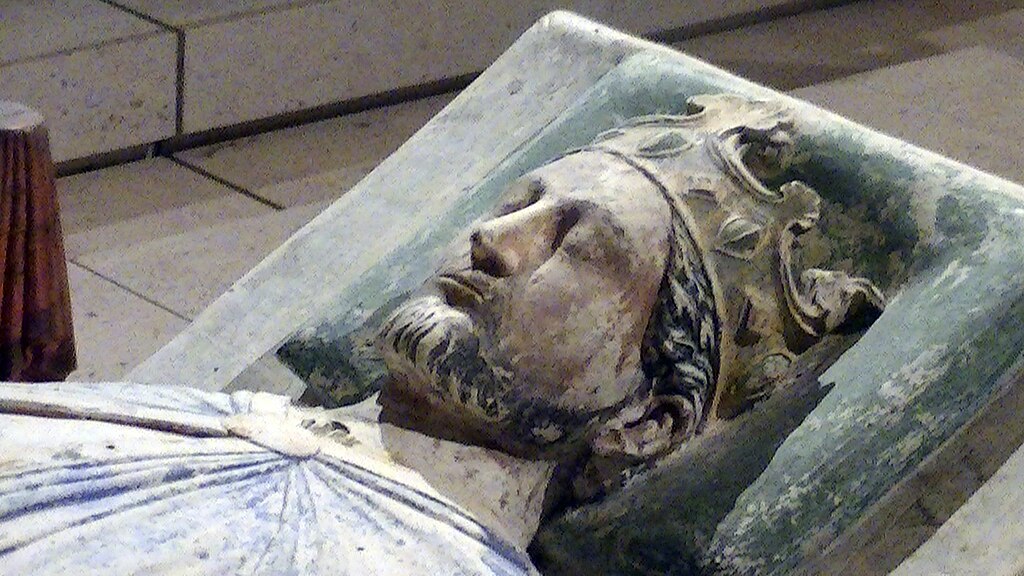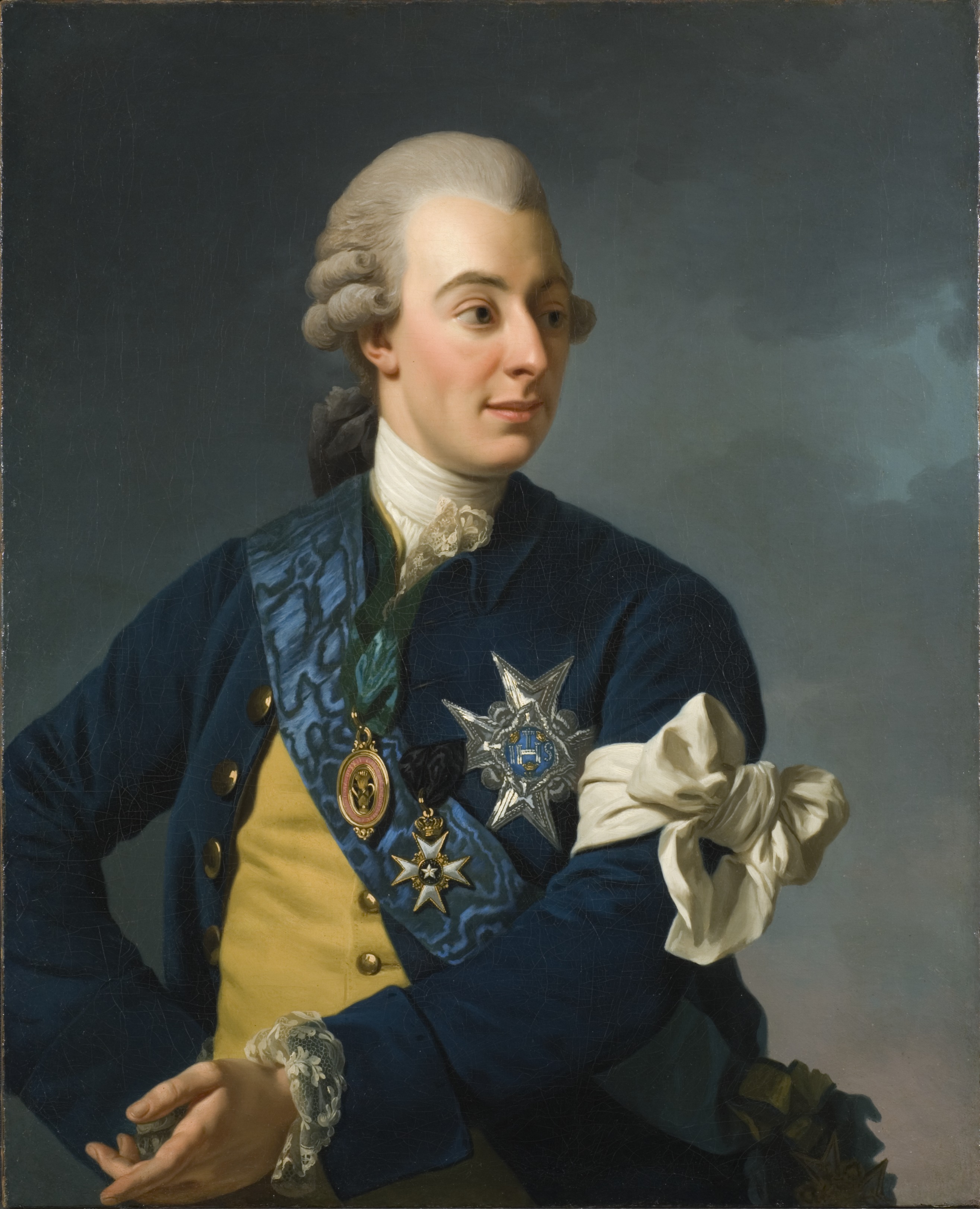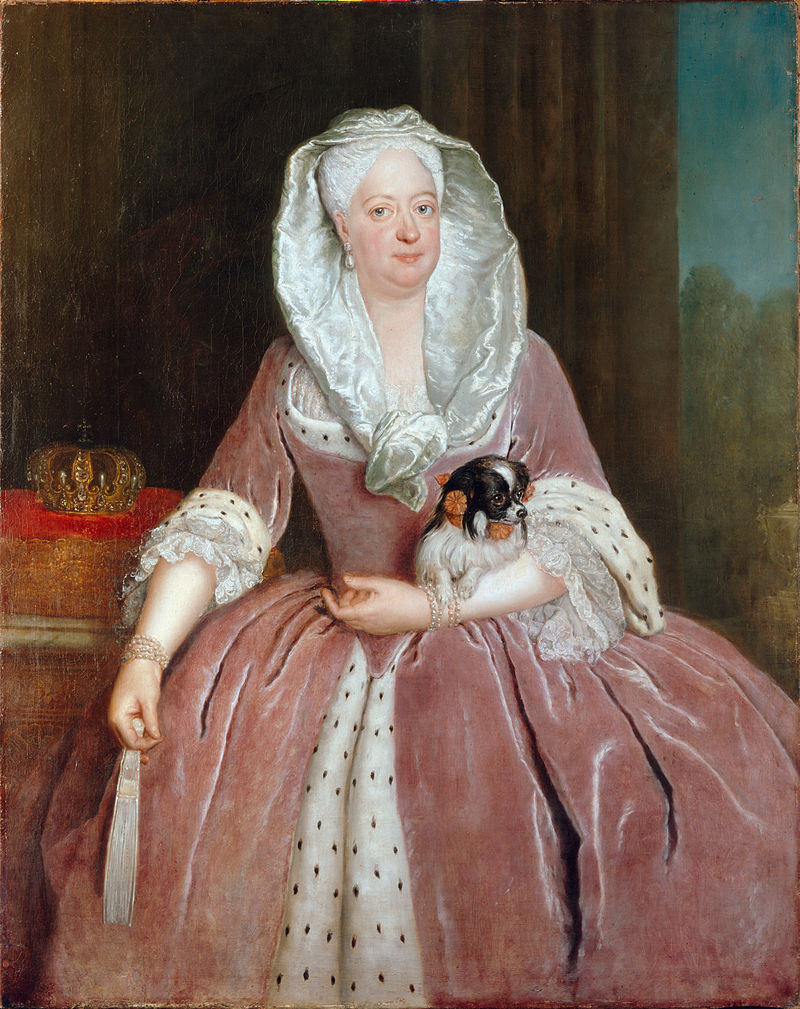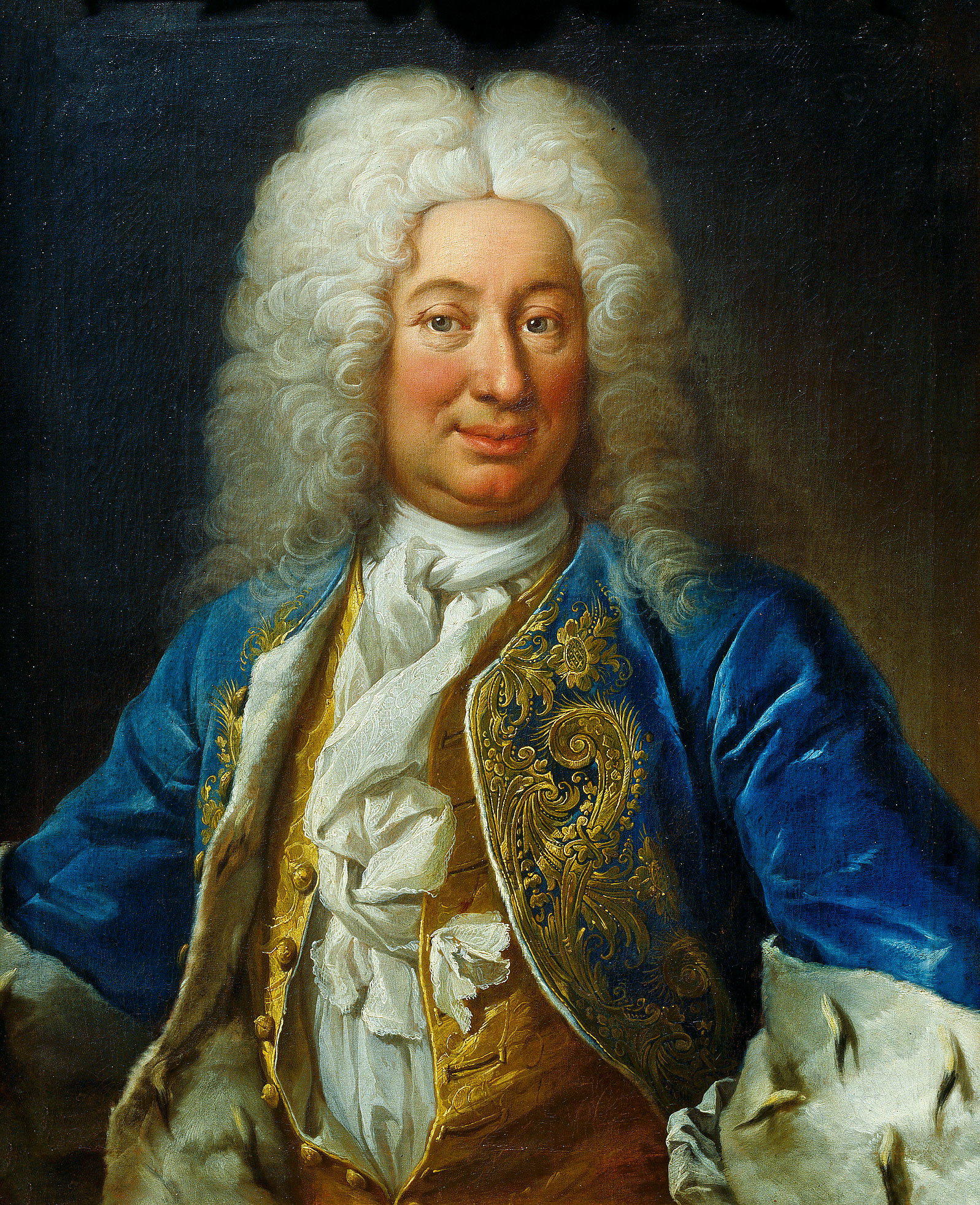© Unofficial Royalty 2024
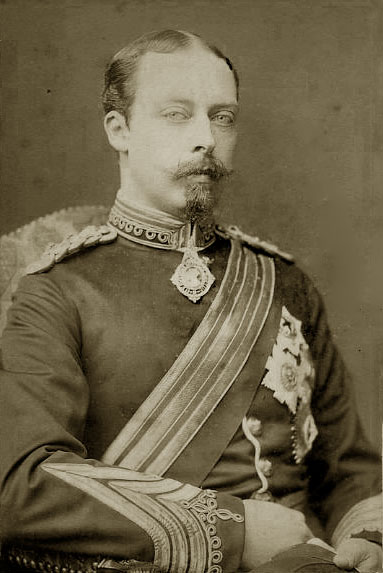
Prince Leopold, Duke of Albany; Credit – Wikipedia
March 28, 1654 – Birth of Sophie Amalie Moth, mistress of King Christian V of Denmark and Norway, in Copenhagen, Denmark
Sophie Amalie was recognized as Christian’s official mistress and was created Countess of Samsøe. Christian V and Sophie Amalie had six children who were all publicly acknowledged. Following the practice of his grandfather and father, Christian also gave his illegitimate children the surname Gyldenløve which means Golden Love. All the children also had Christian or Christiane among their names in honor of their royal father. The current Danish noble family of the Danneskiold-Samsøe descends from the eldest son of Sophie Amalie and King Christian V.
Unofficial Royalty: Sophie Amalie Moth, Mistress of King Christian V of Denmark and Norway
March 28, 1655 – Death of Maria Eleonora of Brandenburg, Queen of Sweden, wife of King Gustav II Adolf of Sweden, at Nyköping, Sweden; buried at Riddarholmen Church in Stockholm, Sweden
In 1620, Maria Eleonora married King Gustavus II Adolphus the Great of Sweden. Gustavus Adolphus is considered one of the greatest military commanders in history and made Sweden a great power, one of Europe’s largest and leading nations during the early modern period. Although Maria Eleonora’s husband Gustavus Adolphus was successful in many endeavors, he was not successful in providing a male heir. At the Battle of Lützen on November 16, 1632, Gustavus Adolphus was killed. His only surviving child was six-year-old Christina, Queen of Sweden who succeeded her father but never married, abdicated, subsequently converted to Roman Catholicism, and moved to Rome. Already suffering from mental issues, Maria Eleonora’s grief was quite painful and her mental issues worsened considerably after her husband’s death in battle. Her young daughter’s regency government feared that Maria Eleonora’s mental instability would adversely influence the young Queen Christina. They decided to separate mother and daughter and Maria Eleonora was sent away from court. Years later, she was able to return to court and Nyköping Castle was granted to her as a residence by order of her daughter. Maria Eleanora survived her husband by twenty-three years, dying at the age of 55, on March 28, 1655, shortly after the abdication of her daughter Queen Christina.
Unofficial Royalty: Maria Eleonora of Brandenburg, Queen of Sweden
March 28, 1709 – Birth of Count Alexei Grigorievich Razumovsky, lover of Elizabeth, Empress of All Russia, in Chernihiv, Russian Empire, now in Ukraine
Alexei’s singing brought him to the Russian court of Elizabeth, Empress of All Russia where he joined the Court Choir. His beautiful singing and good looks earned him the interest of Tsesarevna Elizabeth Petrovna, daughter of Peter I (the Great), Emperor of All Russia, the future Elizabeth, Empress of All Russia In 1732, Elizabeth made Alexei a member of the choir in her private chapel. Soon, he had a room near her apartments. Alexei had personality qualities that made him a good choice to be Elizabeth’s favorite and lover. He was a simple and decent person and well-liked for his kindness, good nature, and tact. He had no ambition and never interfered in politics.
Unofficial Royalty: Count Alexei Grigorievich Razumovsky, lover of Elizabeth, Empress of All Russia
March 28, 1743 – Death of Karl Friedrich, Duke of Saxe-Meiningen in Meiningen, Duchy of Saxe-Meiningen now in Thuringia, Germany; buried at the Castle Church at Elisabethenburg Palace in Meiningen
Karl Friedrich and his elder brothers were both underage when they became the reigning Duke and so their uncles Friedrich Wilhelm and Anton Ulrich oversaw the running of the duchy. Karl Friedrich’s brother Ernst Ludwig II died in 1729, and Karl Friedrich became the reigning Duke. Despite his uncles’ guardianship ending in 1733 when Karl Friedrich reached his majority, he continued to leave the daily running of the duchy to his uncles and his court officials. In poor health, he was unable to walk, had to be carried and driven everywhere, and had little interest in anything that required responsibility. Never married, Karl Friedrich died on March 28, 1743, at the age of 31.
Unofficial Royalty: Karl Friedrich, Duke of Saxe-Meiningen
March 28, 1785 – Birth of Prince Ferdinand of Saxe-Coburg and Gotha in Coburg, Duchy of Saxe-Coburg-Saalfeld, now in Bavaria, Germany
Full name: Ferdinand Georg August
Ferdinand was the uncle of both Queen Victoria and Prince Albert. Although Ferdinand remained Lutheran, he married the wealthy Catholic Princess Maria Antonia Koháry de Csábrág et Szitnya with the condition that they would raise their children Catholic. He was the father of King Ferdinand II of Portugal, the grandfather of Tsar Ferdinand I of Bulgaria, and the founder of the Catholic cadet branch of the House of Saxe-Coburg and Gotha.
Unofficial Royalty: Prince Ferdinand of Saxe-Coburg and Gotha
March 28, 1835 – Death of Auguste de Beauharnais, 2nd Duke of Leuchtenberg, first husband of Queen Maria II of Portugal, at the Palace of Necessidades in Lisbon, Portugal; buried at Monastery of São Vicente de Fora in Lisbon, Portugal
Auguste was the eldest son of Eugène de Beauharnais and Princess Augusta of Bavaria, a daughter of King Maximilian I of Bavaria. Auguste’s father Eugène was the son of the French Empress Joséphine from her first marriage, and therefore a stepson of Napoleon I, Emperor of the French. In January 1835, Auguste married Queen Maria II of Portugal. Sadly, their marriage was to be very short-lived. On March 20, 1835, Auguste complained of a sore throat but refused to see a doctor. By March 23, 1835, his condition was worse and he finally consented to see a doctor. Within days, his condition became extremely grave, doctors told the family there was no hope, and Auguste was given the last rites. Auguste died on March 28, 1835, at the age of 24, most likely from diphtheria.
Unofficial Royalty: Auguste de Beauharnais, 2nd Duke of Leuchtenberg
March 28, 1841- Birth of Prince Alfonso of Bourbon-Two Sicilies, Count of Caserta, Head of the House of Bourbon-Two Sicilies and pretender to the former throne, in Caserta, Kingdom of the Two Sicilies, now in Italy
Full name: Alfonso Maria Giuseppe Alberto
Prince Alfonso of Bourbon-Two Sicilies, Count of Caserta, was a younger half-brother of King Francesco II, the last reigning King of the Two Sicilies. Upon Francesco’s death in 1894, Alfonso became Head of the House of Bourbon-Two Sicilies and pretender to the former throne.
Unofficial Royalty: Prince Alfonso of Bourbon-Two Sicilies, Count of Caserta
March 28, 1846 – Birth of Heinrich XXII, 5th Prince Reuss of Greiz in Greiz, Principality of Reuss-Greiz now in Thuringia, Germany
When Heinrich XXII was thirteen-years-old, his father Heinrich XX, 4th Prince of Reuss of Greiz died. He then succeeded his father as the 5th Prince Reuss of Greiz. Heinrich XXII’s mother Caroline Amalie was Regent of the Principality of Reuss-Greiz from 1859 until 1867. In 1872, Heinrich XXII married Princess Ida of Schaumburg-Lippe, and they had one son and five daughters including Princess Hermine Reuss of Greiz who was the second wife of the former German Emperor and King of Prussia, Wilhelm II. Heinrich XXII, 5th Prince of Reuss of Greiz died from heart disease on April 19, 1902, aged 56, in Greiz, Principality of Reuss-Greiz. Heinrich XXII’s disabled son Heinrich XXIV succeeded him nominally as the 6th Prince Reuss of Greiz. However, two regents from the House of Reuss-Gera (also called the Younger Line) successively ruled the Principality of Reuss-Greiz for the disabled Heinrich XXIV: Heinrich XIV, 4th Prince Reuss of Gera from 1901 – 1913, and then his son Heinrich XXVII, 5th and last Prince Reuss of Gera from 1913 – 1918, when the monarchy was abolished in 1918 at the end of World War I.
Unofficial Royalty: Heinrich XXII, 5th Prince Reuss of Greiz
March 28, 1884 – Death of Prince Leopold, Duke of Albany, son of Queen Victoria, at Villa Nevada in Cannes, France; buried in the Albert Memorial Chapel at St. George’s Chapel, Windsor Castle in Windsor, England
Prince Leopold was the eighth of the nine children and the fourth and youngest son of Queen Victoria and Prince Albert of Saxe-Coburg and Gotha. Leopold was described as delicate from a very early age. It soon became apparent that he suffered from the genetic disease hemophilia. He was the first of the nine hemophiliacs among Queen Victoria’s descendants. In 1882, Leopold married Princess Helena of Waldeck-Pyrmont. The couple had a son and a daughter. Leopold and Helena are the great-grandparents of Carl XVI Gustaf, the current King of Sweden. Unfortunately, Leopold and Helena’s marriage was short-lived. In early 1884, Leopold’s doctors recommended that he spend the winter in Cannes, France, which he had done before. At the time, Helena was expecting her second child. On March 27, 1884, Leopold slipped and fell on the staircase at Villa Nevada, the private home where he was staying in Cannes. He injured his knee and hit his head, and died early in the morning of March 28, 1884, apparently of a cerebral hemorrhage, the injuries having been exacerbated by his hemophilia. He was 31 years old.
Unofficial Royalty: Prince Leopold, Duke of Albany
Unofficial Royalty: Hemophilia in Queen Victoria’s Descendants
March 28, 1896 – Birth of Nadejda Mikhailovna de Torby, Marchioness of Milford Haven, daughter of Grand Duke Mikhail Mikhailovich of Russia, wife of George Mountbatten, 2nd Marquess of Milford Haven, in Cannes, France
Nadejda was the daughter of Grand Duke Mikhail Mikhailovich of Russia, a grandson of Nicholas I, Emperor of All Russia, and his morganatic wife Countess Sophie von Merenberg. As her parents’ marriage was morganatic, her father was stripped of his position at the Imperial Court and banished from Russia for the rest of his life. By the time she was four years old, Nadejda’s family had settled in England, but they also spent part of the year at their villa in Cannes, France. The family became prominent members of British society and developed friendships with several members of the British Royal Family. It was through these friendships that Nadejda met her future husband, Prince George of Battenberg, later 2nd Marquess of Milford Haven, and the uncle of Prince Philip, Duke of Edinburgh. Nadejda and George married in 1916 and had two children. Nadejda was widowed when her husband succumbed to bone marrow cancer in 1938. She survived her husband by twenty-five years, dying at the age of 67.
Unofficial Royalty: Nadejda Mikhailovna de Torby, Marchioness of Milford Haven
March 28, 1901 – Birth of Crown Princess Märtha of Norway, wife of Crown Prince Olav of Norway (after her death, King Olav V of Norway), born Princess Märtha of Sweden at the Palace of the Hereditary Prince in Stockholm, Sweden
Full name: Märtha Sofia Lovisa Dagmar Thyra
The granddaughter of both King Oscar II of Sweden and King Frederik VIII of Denmark, Märtha married her first cousin, Crown Prince Olav of Norway. They had two daughters and one son, King Harald V, the current King of Norway. During World War II, Märtha and her children fled Norway when the Germans invaded, traveling to her native Sweden and then to the United States where she developed a close friendship with President Franklin Roosevelt. Märtha and her children were often included in both public and private functions at the White House. After World War II, she suffered from ill health and died in 1954 following a long battle with cancer. Her husband would go on to become King Olav V in 1957 until his death in 1991, when their son King Harald V, became King of Norway.
Unofficial Royalty: Princess Märtha of Sweden, Crown Princess of Norway
March 28, 1910 – Birth of Princess Ingrid of Sweden, wife of King Frederick IX of Denmark, mother of Queen Margrethe II of Denmark, at the Royal Palace in Stockholm, Sweden
Full name: Ingrid Victoria Sofia Louise Margareta
A great-granddaughter of Queen Victoria, Ingrid was the only daughter of the future King Gustav VI Adolf of Sweden and his first wife Princess Margaret of Connaught. In 1935, she married the future King Frederik IX of Denmark. The couple had three daughters including the current monarch of Denmark, Queen Margrethe II. As Queen, Ingrid reformed some of the outdated practices at court and created a more relaxed atmosphere. She was interested in gardening and art, and after doing her own research on the original appearance of Gråsten Palace, she oversaw the renovations there. Queen Ingrid died in 2000 at the age of 90, surrounded by her three daughters and her ten grandchildren.
Unofficial Royalty: Princess Ingrid of Sweden, Queen of Denmark
March 28, 1965 – Death of Mary, Princess Royal, Countess of Harewood, daughter of King George V of the United Kingdom, at Harewood House in Leeds, Yorkshire, England; buried at All Saints Church in Harewood, West Yorkshire, England
Mary was the only daughter of King George V and Queen Mary and the paternal aunt of Queen Elizabeth II. In 1922, Mary married the future Henry Lascelles, 6th Earl of Harewood and the couple had two sons. Mary continued to carry out engagements during the reigns of her brother King George VI and her niece Queen Elizabeth II. After her husband’s death in 1947, Mary lived at Harewood House with her elder son George, the 7th Earl of Harewood, and his family. On March 28, 1965, Mary went for a walk on the grounds of Harewood House with her elder son George and two of her grandsons. She stumbled and fell and her son helped her to a seat while his sons ran back to the house to get help. Before help arrived, Mary died peacefully in her son’s arms from a heart attack at the age of 67.
Unofficial Royalty: Mary, Princess Royal, Countess of Harewood
This article is the intellectual property of Unofficial Royalty and is NOT TO BE COPIED, EDITED, OR POSTED IN ANY FORM ON ANOTHER WEBSITE under any circumstances. It is permissible to use a link that directs to Unofficial Royalty.
